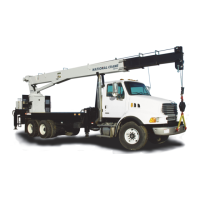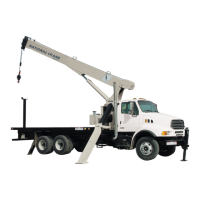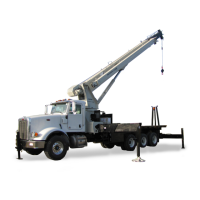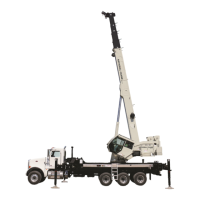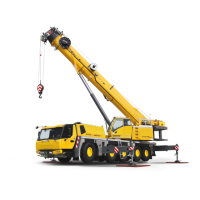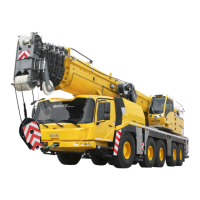5-3
Fatigue of Welded Structures
Experience has shown that highly stressed welded
structures when repeatedly subjected to varying stresses
caused by twisting, shock, bending, and intentional and/or
unintentional overloads, often become subject to weld
cracking which may be attributed to fatigue of the welded
joint. This condition is not uncommon in construction
equipment.
Equipment should be periodically inspected for evidence of
weld fatigue. The frequency of these inspections should
increase with the age of the equipment and the severity of
the application.The following are known high stress areas
applicable to Grove machines, and a visual inspection of
these areas should be made part of an owner’s planned
preventive maintenance program:
• Telescopic Boom: wear pad retaining structures,
hydraulic cylinder attaching points, boom pivot shaft
retaining structures.
• Outrigger pads, beams, boxes and attachment
structures.
• Main frame: generally in the area of doubler plates and
crossmembers; at the junction of front and rear frame
members on truck cranes.
• Turntable bearing connection—where bearing is welded
to the crane superstructure or chassis.
• Counterweight support structures.
• Chassis axle and suspension mounting structures.
• Hydraulic cylinder end connections.
The above is provided only as a guide, and your inspection
plan should not be limited to the areas listed. A thorough
visual inspection of all weldments is good practice.
Anyone requiring more detailed inspection instructions and/
or repair procedures may request same by contacting your
local Manitowoc distributor.
Loctite
Always follow the directions on the Loctite container, as not
all Loctite types are suitable for all applications.Various types
of Loctite are specified throughout the Service Manual. The
following types of Loctite brand adhesives are available from
the Parts Department of the local Manitowoc distributor.
Application of Medium Strength Loctite
NOTE: The fastener may be re-used; the adhesive may be
re-applied over cured adhesive residue.
The following procedure covers the proper application and
curing method for medium strength Loctite adhesive/sealant
(Loctite #242) and primer (Locquic Primer T7471).
Primer Application
NOTE: It is not necessary to bathe the threads in primer.
1. Ensure the threaded surface, both male and female, is
clean and free of dirt and oil. Apply a light spray coating
of primer to both male and female parts to be joined to
clean and accelerate the curing process.
2. Allow the part to dry prior to adhesive/sealant
application.
Adhesive/Sealant Application
1. Apply a bead perpendicular to the thread, several
threads wide, in the approximate area of threaded
engagement (see Figure 1-3).
2. In a blind hole application, a bead of several drops of
adhesive should be applied into the bottom of the hole to
be hydraulically forced up during engagement.
3. After application and engagement of mated threads,
fixturing will occur within five (5) minutes if primed prior
to engagement. Fixturing may take up to 30 minutes on
unprimed parts.
4. Time required to achieve full strength is 24 hours.
Maximum ultimate strength is achieved using no primer
with this specific threadlocking adhesive.
Fasteners and Torque Values
Use bolts of the correct length. A bolt which is too long may
bottom before the head is tight against the part it is to hold. If
a bolt is too short, there may not be enough threads engaged
to hold the part securely. Threads can be damaged. Inspect
them and replace fasteners, as necessary.
Torque values should correspond to the type bolts, studs,
and nuts being used.
The torque tables are provided by Manitowoc for reference
when performing maintenance.
CAUTION
Skin and/or Eye Hazard!
Loctite type adhesives contain chemicals that may be
harmful if misused. Read and follow the instructions on
the container.
4203
FIGURE 5-1
Bead Application
Reference Only
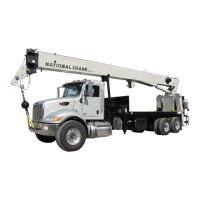
